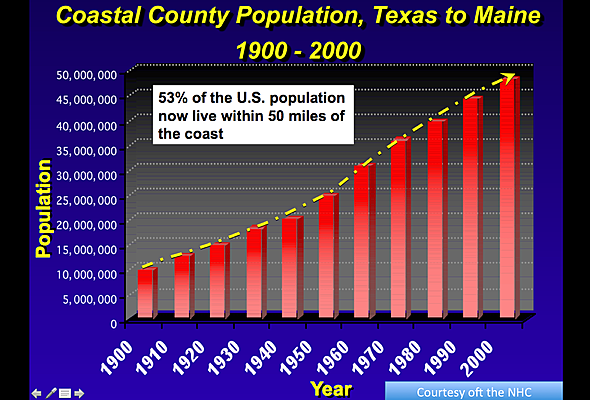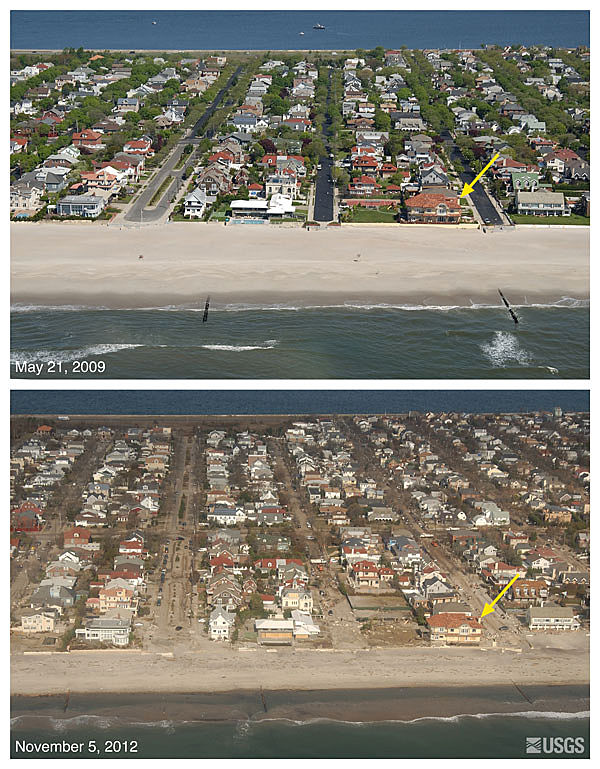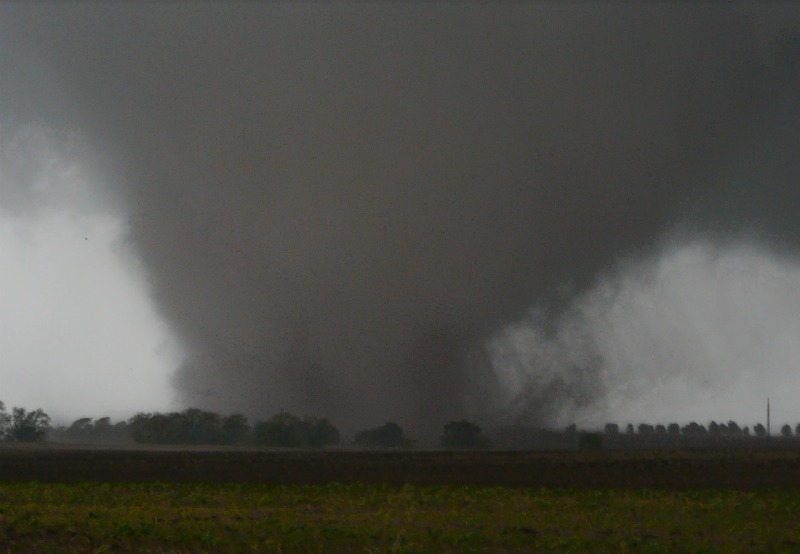Hurricane Risks Rise as Coastal Populations Grow

This article was provided by AccuWeather.com.
Populations along the coasts are growing exponentially, which could mean problems when it comes to hurricane season.
According to 2012 United States Census Bureau data, the nine states with the highest population density are all located along the East Coast. NOAA's State of the Coast research indicates that coastal populations will continue to grow at a faster rate than the rest of the country, with an expected increase of 37 people per square mile for shoreline counties and only an 11 person per square mile increase for the United States as a whole. From 1970 until 2010, coastal populations have risen by 39 percent.
Part of what draws people to coastal cities is rooted in history. When the country was forming, cities were built closer to shores for easy access to shipping routes. Overtime a cycle was created: with more people on the coasts, more development was needed and more jobs were created, which led to more people moving to coasts to get those jobs, which led to further development. As a result some of the countries biggest centers for trade and industry are located in densely populated East Coast cities. New York City has a population of 8,336,697, with 27,543.1 people per square mile.
Some residents are also drawn to coasts for leisure aspects, such as vacationers purchasing summer homes on beaches, or water enthusiasts building their permanent residencies in shoreline communities.
The numbers of people are expanding but the size of the land is not, and the imbalance wears on resources. Aquatic wildlife populations are affected as building and expansion disrupt their natural habitats. Air pollution increases as more traffic is brought to a more concentrated area. The shores themselves face higher rates of erosion.
While some erosion occurs naturally, waves often slowly replace the sands they initially pulled away. But when erosion occurs at an accelerated rate as it does in highly populated areas, the rate of natural replacement is not enough to keep up.
Get the world’s most fascinating discoveries delivered straight to your inbox.
According to the U.S. Geological Survey, beach erosion increases the risks when hurricanes hit. Beach elevations are lowered, making them more prone to flooding. Dune erosion diminishes the protective barrier that dunes offer coastal homes, which makes them more susceptible to higher damages. Then, when a strong storm does come through, it erodes beaches even further, making the towns and cities even more vulnerable to future weather effects.
To combat the issue, many coastal governments are implementing building regulations. Permits may be required that demand a reinforcing structure is created before building near beaches. The most common of these are seawalls, walls built out of stone or concrete to hold back bluffs or sand dunes from waves, and groins, which are similar to jetties, but serve a different purpose. Groins are set up to try and "trap" sand that is being pulled by the ocean.
There are problems with these solutions, however. Seawalls protect the land behind them, but increase erosion to the parts of the beach that lay before them. Waters hit the wall and are sent back at a more rapid rate than if they were to creep up the beach and then roll away. Groins, when properly constructed, may help to an extent, but cannot hold all sediment in place.
Another way to prevent accelerated erosion is to decrease beach and water pollution. Coral reefs are natural protectors against rapid erosion, but are delicate and extremely sensitive to changes in water acidy and temperature. By maintaining the natural state of the ocean, coral reefs remain healthy and alive to control the levels of sand that are washed away.
AccuWeather.com Expert Senior Meteorologist Dan Kottlowski emphasizes that beach goers don't interfere with protective measures.
"People have to be fully aware that barriers are built up for good reason," he said.
He states that one of the biggest concerns that comes with increased populations at the coast is the way people interact with the beach. Sand dunes, for example, may be flattened by private property owners to enhance the view of the ocean. Not only will this increase the risk of damage if a storm comes through, but insurance companies may not cover these damages as a result of the interference with the dunes.
Plant life on the dunes also needs to be protected and kept healthy, so that they may anchor the dunes in place. It takes years from small trees and shrubs to grow into dunes to anchor them well, so if dune vegetation is disrupted, they will remain less efficient for a long period of time.
AccuWeather.com. All rights reserved. More from AccuWeather.com.
The only sure thing about weather forecasts is that they’re wildly different all over the planet. Test your knowledge on the wild ranges in temperature, precipitation and more.
Extreme Weather Facts: Quiz Yourself




